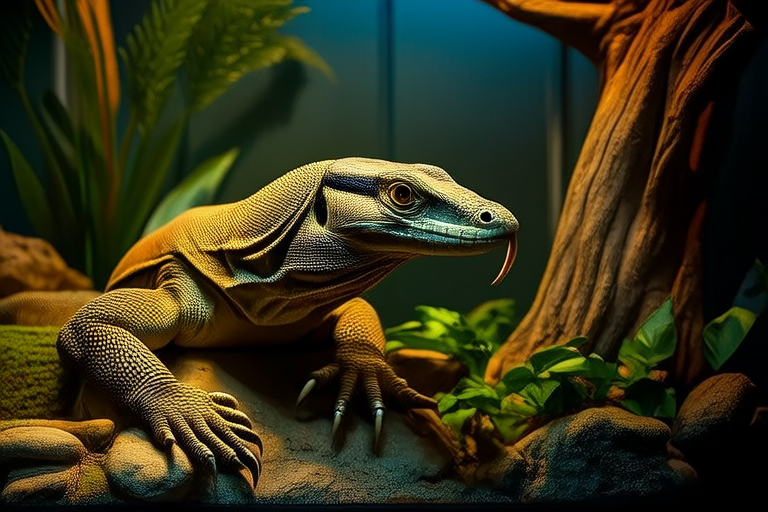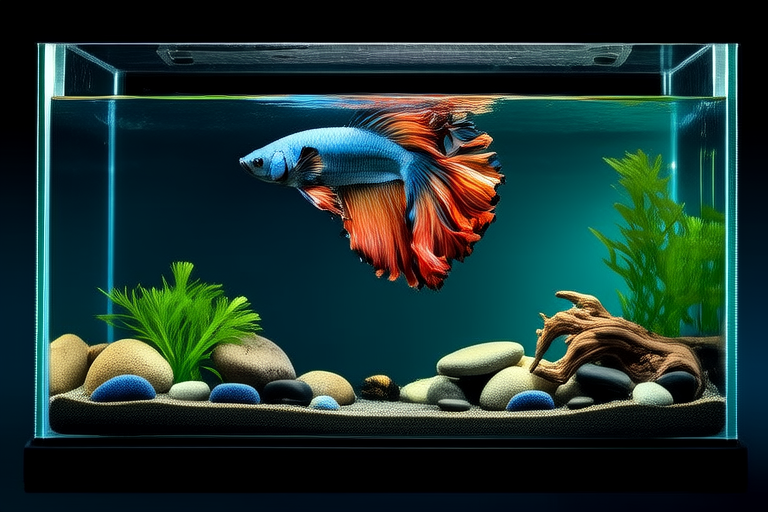
Adventures with a Water Monitor: A Beginner’s Journey into Exotic Pet Keeping
Welcome to the captivating world of exotic pet keeping! Among the diverse array of creatures that enthusiasts can choose from, the water monitor (Varanus salvator) stands out as a fascinating choice. Known for their intelligence, adaptability, and striking appearance, these reptiles have long been a subject of fascination for reptile lovers. As a beginner in this exciting field, I embarked on a journey to learn firsthand what it means to own and care for a water monitor. This article will guide you through my adventures, offering insights into the joys and challenges of keeping one of these magnificent animals.
The Unique Appeal of Water Monitors
Water monitors, native to parts of Asia, are some of the largest lizards in the world. Their sleek bodies, sharp claws, and powerful tails make them both beautiful and formidable. These reptiles are highly intelligent and curious, often displaying behaviors that are reminiscent of domesticated pets. They can be trained to recognize their handlers and respond to stimuli, making them a rewarding companion for those who are willing to invest time and effort into their care.
Initial Experiences and Challenges
My first encounter with a water monitor was both thrilling and intimidating. Handling a creature of such size and power required careful preparation and patience. The initial challenge was learning how to approach the monitor without causing it undue stress. It took several weeks of gentle interactions before I could confidently handle my new friend. Patience and consistency were key during this period, as building trust with a water monitor is crucial.
One of the most significant challenges was understanding the specific environmental needs of a water monitor. Unlike smaller or more common reptiles, water monitors require a habitat that mimics their natural environment as closely as possible. This includes a spacious enclosure, ample space for swimming, and areas for basking. Ensuring that all these elements are correctly set up requires thorough research and planning.
Essential Care Requirements
Habitat Setup
A proper habitat is fundamental to the well-being of your water monitor. Given their size and activity level, they need a large enclosure that provides ample space for movement and exploration. The enclosure should include a deep water area where the monitor can swim and submerge itself completely. Additionally, there should be dry areas for basking under UVB lighting, which is essential for calcium absorption and overall health.
Temperature control is also critical. Water monitors thrive in a temperature range between 85°F and 95°F (29°C to 35°C) during the day, with a drop to around 75°F (24°C) at night. Maintaining this temperature gradient ensures that the monitor can regulate its body temperature effectively.
Diet
Feeding a water monitor can be an interesting experience. In the wild, these reptiles are opportunistic feeders, consuming a wide variety of prey items. As pets, they require a balanced diet that includes rodents, fish, insects, and occasionally fruits or vegetables. Feeding young monitors more frequently and providing a variety of food items helps ensure they grow strong and healthy.
Proper feeding techniques are important to avoid overfeeding or underfeeding. Overfeeding can lead to obesity, while underfeeding can result in malnutrition. It’s advisable to consult with a veterinarian specializing in exotic pets to determine the correct feeding schedule and portion sizes for your monitor.
Health Considerations
Regular health check-ups are essential for maintaining the well-being of your water monitor. Common health issues include metabolic bone disease, respiratory infections, and parasites. Signs of illness may include lethargy, loss of appetite, or unusual behavior. Early detection and treatment are crucial for managing these conditions effectively.
Veterinary care for water monitors can be expensive, so it’s wise to find a veterinarian experienced in treating exotic pets before bringing home your monitor. Regular visits and preventive care can help keep your pet healthy and reduce the likelihood of serious health issues.
Legal Aspects
Before acquiring a water monitor, it’s important to understand the legalities surrounding their ownership. Regulations vary by region, and some areas may prohibit or restrict the keeping of certain species. Researching local laws and obtaining any necessary permits or licenses is crucial to avoid legal troubles.
Tips for Beginners
Handling and Bonding
Handling your water monitor should always be done with care and respect. Always wash your hands before and after handling to prevent the transfer of bacteria or parasites. Using gloves can provide additional protection, especially when handling younger or more aggressive monitors.
Bonding with a water monitor takes time and patience. Consistent, gentle interactions can help build trust. Offering treats and spending time in the same room as your monitor can also foster a positive relationship. However, it’s important to remember that even well-bonded monitors may exhibit occasional aggressive behavior, especially during feeding times or when feeling threatened.
Reflections and Advice
Owning a water monitor has been an enriching and rewarding experience. Watching these intelligent creatures interact with their environment and observing their unique behaviors has provided countless moments of joy and wonder. The bond formed through consistent interaction and care is deeply fulfilling.
For those considering adopting a water monitor, my advice is to thoroughly research and prepare for the commitment. Owning one of these magnificent reptiles requires dedication, resources, and a willingness to learn continuously. Be prepared for the challenges, but also embrace the rewards that come with caring for such an extraordinary animal.
In conclusion, embarking on the journey of keeping a water monitor is an adventure filled with learning, growth, and companionship. With the right knowledge and preparation, you can enjoy a rewarding relationship with one of nature’s most fascinating creatures.





